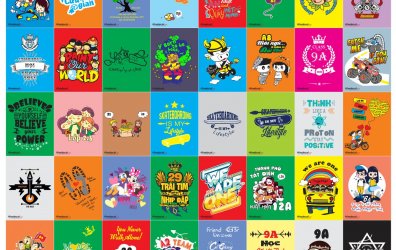V
vikram kumar
So, I've been deep in the world of Fintech Advertising lately — not by choice at first, honestly. I helped a small startup with some digital campaigns, and we were totally winging it when it came to our ad funnel. You know that feeling when you throw money at paid ads and hope something sticks? Yep, that was us.
After a few months of “testing,” we realized our ads were driving traffic but not conversions. People will click, browse, and then… vanish. It was like having a busy store where no one actually buys anything. That's when I started digging into how a proper fintech advertising funnel should actually work.
The Initial Struggle
At first, I thought fintech audiences just had a longer decision-making process. Maybe they needed more time to trust us. But then I noticed something interesting — even competitors with similar offers were converting better. That's when it hits me: it's not always the product; sometimes it's how you guide people toward the product.
Fintech isn't like selling clothes or gadgets. You're dealing with people's money, so the usual flashy ad tricks don't work. I kept reading posts where marketers said things like “trust is the new click,” and it finally made sense. We weren't building trust — we were just pushing offers.
Trying to “Fix” the Funnel
So, I started breaking down our funnel. Instead of jumping straight into “Sign up now” ads, I tested a few awareness-stage campaigns — things like short educational videos about managing personal finances, or simple explainers about how our app works.
The first surprise? The engagement on those ads was way higher. People were commenting, asking questions, and actually sharing the content. The funny part? None of those ads even mentioned signing up. But when we later ran conversion-focused ads (like app installs or demo sign-ups), the conversion rate nearly doubled.
Apparently, the awareness phase wasn't just fluff — it was warming up the audience in a way that made the next steps easier.
Middle of the Funnel Magic
Then came the tricky middle part. We'd caught people's attention, but keeping it was another story. I started experimenting with retargeting ads that reminded users of what they'd seen earlier, but with slightly more context — like testimonials or short stories from real users.
That's when things start to click (literally and figuratively). Retargeting ads with customer voices performed better than any product-focused post. It made me realize fintech is so personal that people just want reassurance from others like them, not just a faceless ad shouting “trust us.”
We also cleaned up our landing pages — fewer buzzwords, more clarity. I ditched phrases like “next-gen financial platform” and replaced them with “an easy way to manage your savings in one place.” The bounce rate dropped almost immediately.
Learning the Hard Way
Of course, it wasn't all smooth sailing. One of our biggest mistakes early on was assuming that more targeting = better results. We went super narrow with our audience, thinking precisely would help. Instead, we limit our reach and lose potential conversions from people who didn't fit our “ideal” profile on paper but might've been interested.
The fix? We went wider, but used layered messaging. Awareness ads reached a wider group, and then we refined the funnel as users interacted. Kind of like fishing with a wide net first, then sorting the catch later.
What Actually Worked
If I had to summarize what makes the difference, it would be this: sequencing and trust. Once we stopped treating ads as isolated campaigns and started viewing them as parts of a guided path, everything improved — clicks, engagement, even retention.
It wasn't just about the ad creative or the targeting; it was about what people saw next. Each step in the funnel needed to answer a small question before asking for a big commitment.
For example:
What Helped Me Learn
I came across this solid breakdown while researching: Crafting a Fintech Advertising Funnel That Drives Conversions . It explains how to map your funnel stages and build smoother audience journeys. I liked how it emphasized education over persuasion — that approach really fits the fintech world, where transparency matters more than urgency.
Final Takeaway
If you're struggling with Fintech Advertising, my biggest tip is to stop thinking like an advertiser and start thinking like a guide. Most fintech users aren't impulsive buyers; they're cautious, curious, and want to feel informed.
Your funnel shouldn't push — it should nudge. Lead them from curiosity to confidence. Once you do that, conversions stop being a mystery and start feeling like a natural next step.
After a few months of “testing,” we realized our ads were driving traffic but not conversions. People will click, browse, and then… vanish. It was like having a busy store where no one actually buys anything. That's when I started digging into how a proper fintech advertising funnel should actually work.
The Initial Struggle
At first, I thought fintech audiences just had a longer decision-making process. Maybe they needed more time to trust us. But then I noticed something interesting — even competitors with similar offers were converting better. That's when it hits me: it's not always the product; sometimes it's how you guide people toward the product.
Fintech isn't like selling clothes or gadgets. You're dealing with people's money, so the usual flashy ad tricks don't work. I kept reading posts where marketers said things like “trust is the new click,” and it finally made sense. We weren't building trust — we were just pushing offers.
Trying to “Fix” the Funnel
So, I started breaking down our funnel. Instead of jumping straight into “Sign up now” ads, I tested a few awareness-stage campaigns — things like short educational videos about managing personal finances, or simple explainers about how our app works.
The first surprise? The engagement on those ads was way higher. People were commenting, asking questions, and actually sharing the content. The funny part? None of those ads even mentioned signing up. But when we later ran conversion-focused ads (like app installs or demo sign-ups), the conversion rate nearly doubled.
Apparently, the awareness phase wasn't just fluff — it was warming up the audience in a way that made the next steps easier.
Middle of the Funnel Magic
Then came the tricky middle part. We'd caught people's attention, but keeping it was another story. I started experimenting with retargeting ads that reminded users of what they'd seen earlier, but with slightly more context — like testimonials or short stories from real users.
That's when things start to click (literally and figuratively). Retargeting ads with customer voices performed better than any product-focused post. It made me realize fintech is so personal that people just want reassurance from others like them, not just a faceless ad shouting “trust us.”
We also cleaned up our landing pages — fewer buzzwords, more clarity. I ditched phrases like “next-gen financial platform” and replaced them with “an easy way to manage your savings in one place.” The bounce rate dropped almost immediately.
Learning the Hard Way
Of course, it wasn't all smooth sailing. One of our biggest mistakes early on was assuming that more targeting = better results. We went super narrow with our audience, thinking precisely would help. Instead, we limit our reach and lose potential conversions from people who didn't fit our “ideal” profile on paper but might've been interested.
The fix? We went wider, but used layered messaging. Awareness ads reached a wider group, and then we refined the funnel as users interacted. Kind of like fishing with a wide net first, then sorting the catch later.
What Actually Worked
If I had to summarize what makes the difference, it would be this: sequencing and trust. Once we stopped treating ads as isolated campaigns and started viewing them as parts of a guided path, everything improved — clicks, engagement, even retention.
It wasn't just about the ad creative or the targeting; it was about what people saw next. Each step in the funnel needed to answer a small question before asking for a big commitment.
For example:
- Awareness stage: “Who are you, and why should I care?”
- Consideration stage: “Can I actually trust you with my data?”
- Conversion stage: “Okay, how do I get started easily?”
What Helped Me Learn
I came across this solid breakdown while researching: Crafting a Fintech Advertising Funnel That Drives Conversions . It explains how to map your funnel stages and build smoother audience journeys. I liked how it emphasized education over persuasion — that approach really fits the fintech world, where transparency matters more than urgency.
Final Takeaway
If you're struggling with Fintech Advertising, my biggest tip is to stop thinking like an advertiser and start thinking like a guide. Most fintech users aren't impulsive buyers; they're cautious, curious, and want to feel informed.
Your funnel shouldn't push — it should nudge. Lead them from curiosity to confidence. Once you do that, conversions stop being a mystery and start feeling like a natural next step.




